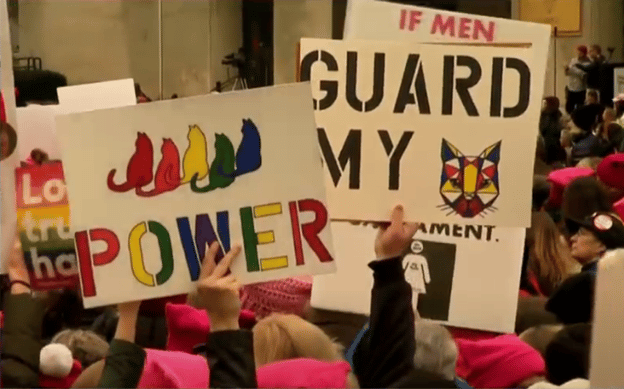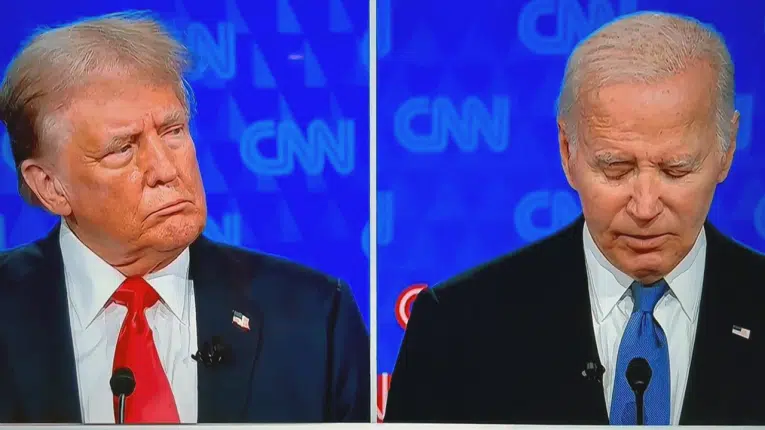
Women have been the backbone of the Democratic Party in modern elections, but looking at the party’s favorability over time, the data suggests Democrats are pushing away female voters. This shouldn’t come as a surprise. Key issues that female voters prioritize – such as the cost of living, safety, and border security which is directly linked to reducing crime – have been entirely mismanaged by the left. On top of that, the Democratic Party’s increasingly blatant attempts to encourage men in women’s sports and push a corrosive cultural agenda into the classrooms of children can no longer be ignored. Female voters are rethinking the radical left, and for good reason.
Data from YouGov that tracks the Democratic Party’s favorability over time shows a worrying trend for Democrats. While the Democratic Party’s favorability rating was underwater by a single percentage point in the fall of 2017 before the 2018 midterm cycle, the party is now underwater by eighteen points. Data from 2017 reveals the Democratic Party sat at a lukewarm approval rating of -1, with 44 percent of voters approving of the party while 45 percent disapproved in Sept. 2017. Fast-forward to Sept. 2025 and nearly 58 percent of women disapprove of the Democratic Party while less than 40 percent approve. This represents a seventeen-point decline in Democratic Party approval among female voters compared to the 2018 midterm cycle, when Democrats enjoyed a net gain of 40 seats in the U.S. House. The numbers are not great for Democrats compared to the 2022 midterm cycle, either. In Sept. 2021, the Democratic Party’s favorability was positive by three points, with 48 percent of women approving of the party while 44 percent disapproved.
What might be driving this skyrocketing disapproval for Democrats? Survey data has consistently shown that while all Americans are unhappy with the high price of goods, women are more sensitive to the cost of goods and services than other groups. Inflation/prices is the top concern to women according to the latest Economist/YouGov survey from Sept. 26-29, with 24 percent of women, compared to 19 percent of men, saying inflation is their number one priority. Jobs (11 percent), healthcare (11 percent) and immigration (7 percent) are the next tier of issues for female voters.
Americans overall trust the Republican Party to handle economic issues, and with inflation and the economy being primary concerns for women, it is not surprising that female voters are unsure whether to support the Democratic Party’s string of economic failures. Healthcare was once an area where the Democratic Party was able to appeal to women, but since the mishandling of the pandemic in blue states, President Trump’s reelection, the installation of Robert F. Kennedy, Jr. as Health and Human Services secretary, and the highly popular “Make America Healthy Again” movement, women are gravitating toward the GOP to address health concerns. Lastly, on immigration, Democrats have largely lost the battle on the border and deportation. President Trump’s deportation efforts are widely popular, and Democrats are not trusted to handle immigration by a majority of the public.
Overall, Democrats are driving away women at the margins, and that shift could catch up with them in the 2026 midterm cycle and beyond. While not as rapid of a shift as the Hispanic exodus from Democrats, female voters have been slowly trending back toward the right in the wake of the 2016 election.
Between the 2018 and 2022 midterm cycles, Democrats lost six points with women – going from winning 59 percent of the female vote in the 2018 midterms under President Trump to 53 percent in 2022 under Biden. Despite the electoral landscape historically favoring the out-of-power party in midterm elections, Democrats are not polling well with women leading into 2026. The latest generic Congressional ballot data from The Economist/YouGov shows Democrats collecting just 46 percent of the female vote in the midterm cycle with a great number of women undecided.
In terms of the presidency, Mitt Romney won 44 percent of the female vote in 2012 against Barack Obama, and four years later when faced with a choice between President Donald Trump and Hillary Clinton, a smaller share of women, 41 percent, chose Trump. But by 2024, Republicans were back to their 2012 numbers with women – 44 percent of female voters chose Trump in 2024, up from 42 percent in 2020.
The Democratic Party has long relied on rallying women to their causes to maintain power in Washington, but as more of the country rejects the left’s failed open borders agenda and demands stronger trade deals and real solutions to public safety, women are becoming disillusioned with Democrat solutions. The Democratic Party, despite paying lip-service to so-called gender issues, has largely caused women and families to suffer, and the party’s failures are translating into rising dissatisfaction.
Manzanita Miller is the senior political analyst at Americans for Limited Government Foundation.






